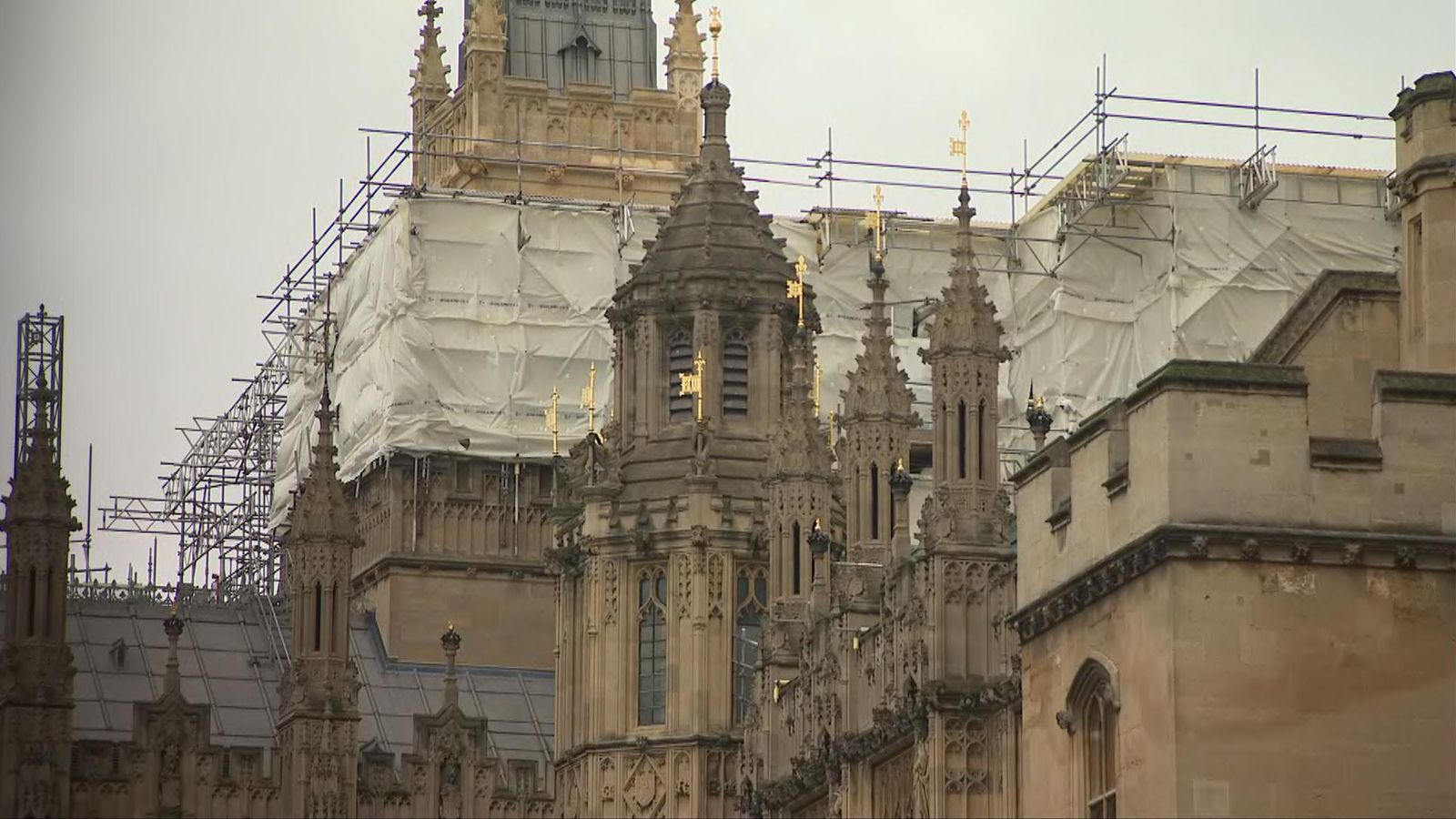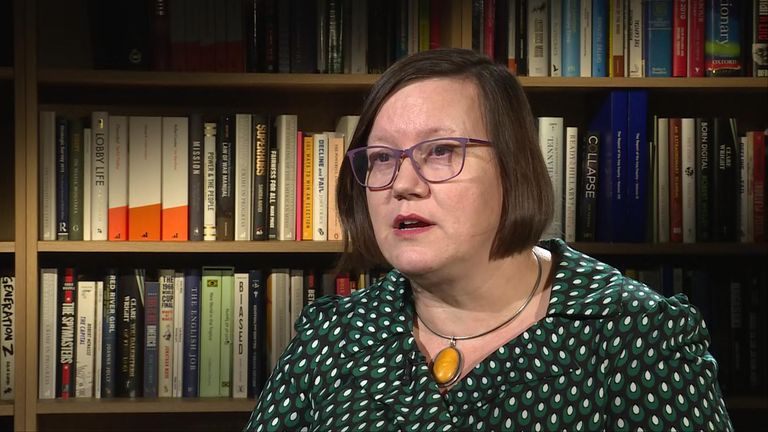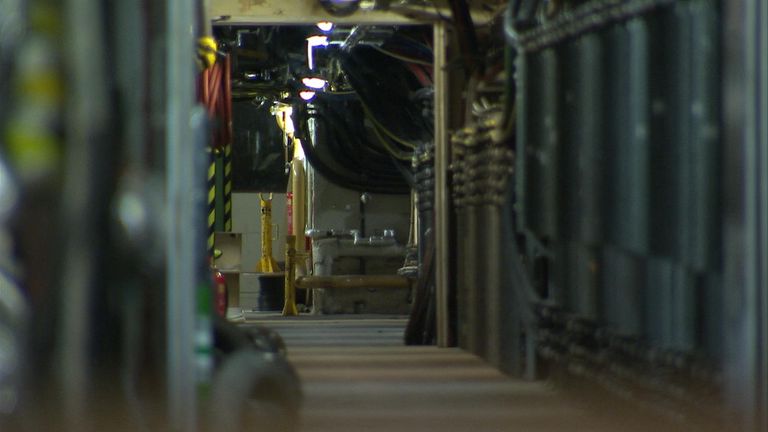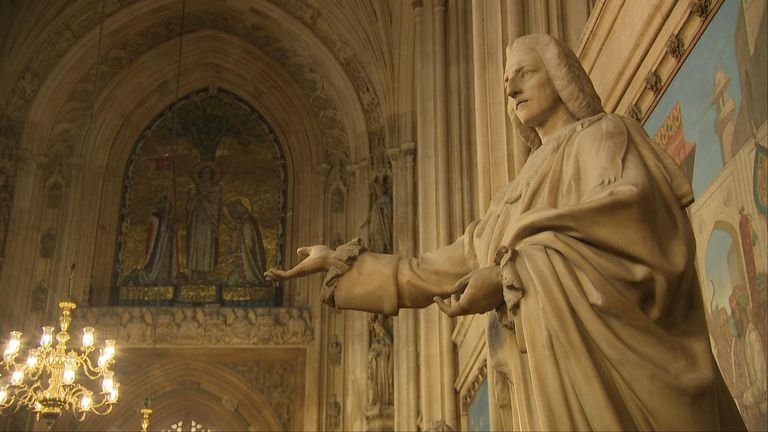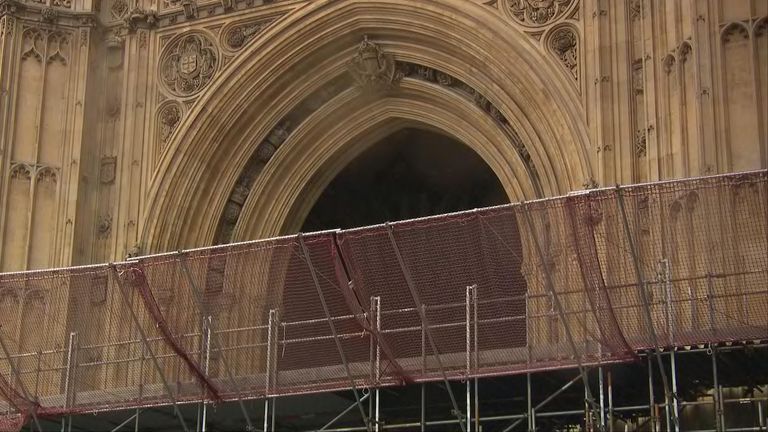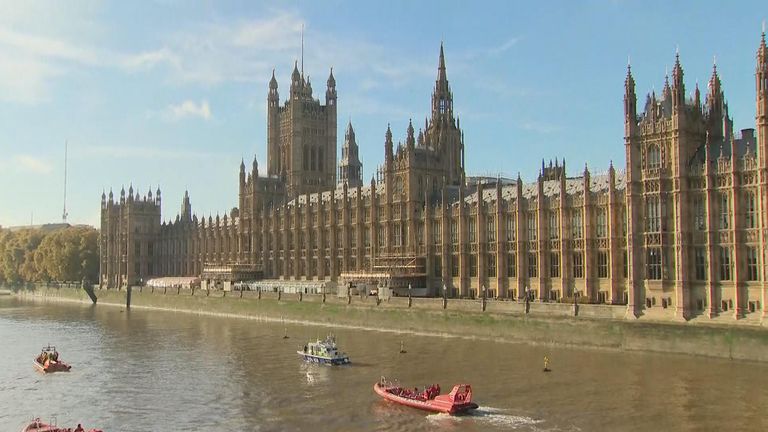The chair of the Public Accounts Committee has told Sky News she “could weep for the five years” lost by the decision to abolish the organisation set up to managed the long-term renovation of parliament.
Dame Meg Hillier MP says there is an “unacceptable cloak of secrecy” around the restoration programme which she says was effectively sent back to the drawing board after the estimated bill rose to between £7 and £22 billion.
But every week the work isn’t done costs £2.5m maintenance – and former leader of the house Dame Andrea Leadsom says she’s worried the Palace of Westminster could be Britain’s Notre Dame.
After decades of debate, MPs are still intensely divided about the cost of the work, whether they have to move out of parliament, and where their temporary home might be if so.
When the Palace of Westminster burnt to the ground in 1834 the flames were so high they could be seen from 20 miles away.
Politicians of the day had spent many years beforehand arguing about the need to renovate the old parliament.
Now, nearly 200 years later, many fear that without large-scale restoration work a similar disaster could befall its successor.
But after decades of debate, the organisation set up by parliament in 2018 to manage the huge renovation project has been scrapped.
“I could weep for the five years we’ve lost,” says Dame Meg Hillier, chair of the Public Accounts Committee. “There was a real issue here about shooting the messenger.
“It feels very much like we are back to square one. Now we have no sponsor body, no plans to carry out the work, and there’s still argument about whether we should stay in the building while the work is done or not.
“This is not about us as MPs. This is about a building that belongs to the country – yes, it will cost a lot of money, but you can’t dodge it.”
A recent report from the committee concluded any likely start date “has been pushed back by many years because of repeated attempts to revisit the basis of the programme”.
“We do not want it to take another catastrophic incident to finally galvanise action,” it reads.
What work is actually taking place?
Ongoing repair work to strengthen the roof and Victorian masonry is constantly under way and work has recently been carried out to restore the ceiling of St Stephen’s Hall, for example (on the site of the original Commons Chamber, which burnt down), as well as the renovation of the Elizabeth Tower and Big Ben.
But the real challenge is in the vast, labyrinthine basement with gas and dripping water pipes jumbled together alongside a morass of electric wiring, telephone cables, and even a working steam engine which is part of the Victorian sewage system.
Dr Alexandra Meakin, a politics lecturer at the University of Leeds, is an expert on the restoration programme. She says the mess in the basement is a disaster waiting to happen.
“With gas and steam pipes running alongside each other, even a tiny leak, there is a huge fire risk – it’s only allowed to stay open at all if there are fire wardens patrolling 24 hours a day.
“The risk is real, it’s not just cosmetic work. And it’s not just about the MPs and peers, but about the staff who work there – the thousands of people in catering and cleaning who shouldn’t have to work in a death trap, not to mention all the millions of visitors, including school children.”
The palace is also riddled with asbestos – last year it emerged a leak during building work meant up to 117 contractors and staff had potentially been exposed.
“If you try to do major work in the palace, it’s going to be difficult to work around it,” says Dr Meakin. “Asbestos runs the whole length of the building.”
Concerns over costs, timescales and governance
In January 2018, parliament voted to move forward with plans to vacate the building – known as a ‘decant’ – and carry out a full renovation, setting up an independent sponsor body (a team of some 55 staff and experts as well as parliamentarians) to lead and manage the project along the lines of the London Olympics.
Last January they published provisional cost and schedule estimates which predicted that the essential works alone would cost between £7bn and £13bn – and take 19 to 28 years.
If MPs and peers insisted on staying put, they warned the project could end up lasting as long as 76 years, and cost as much as £22bn.
For some, this was just too much to accept.
In March, the Commissions of the House of Commons and Lords (made up of the speakers, clerks and other senior parliamentarians) said they had concerns over the project’s costs, timescales and governance.
They recommended scrapping the sponsor body altogether and bringing the vast project in house.
MPs and Lords voted that through in the summer, and the decision passed into law just before Christmas.
Conservative MP Sir Edward Leigh is sceptical of what he describes as the “ridiculous” estimates drawn up by the sponsor body.
“There are ways of doing it that mean you don’t have to move everybody out at vast expense,” he claims.
“We can’t have a very expensive gold-plated plan, especially when the economy is in tatters – the public would look askance at parliament spending £20bn on itself.”
‘We just need to get on with it’
Last month the Shadow Leader of the House, Thangam Debbonaire MP, accused some MPs of “undermining” the work of the sponsor body and “wrangling with the experts”.
Sir Edward denies this is the case, and says it’s right for MPs and Lords to take back control of the project.
“We just need to get on with it and make it safe,” he says.
Dame Meg Hillier by contrast describes the commission’s intervention as “grubby”.
“If they did this to any other piece of legislation, there would be uproar,” she says. “I’m incredibly concerned.
“We’ve seen huge problems in the past – costs nearly tripled during the renovation of the Elizabeth Tower, and the memory of what happened with Portcullis House [which ended up substantially over budget and schedule when built to house MPs’ offices in the 1990s] still haunts people here.”
Where would staff move to?
Another complication is the lack of consensus on where the occupants of the Palace of Westminster would move to, even if agreement is reached on the need for them to do so.
While long-established plans had been developed to decant the Lords to the nearby Queen Elizabeth II Conference Centre, then-prime minister Boris Johnson later asked the programme to explore the option of sending them to York instead.
In May 2022 Levelling Up Secretary Michael Gove also intervened, saying he would rather see them moving to Stoke.
As for MPs, under a previous phase of the project, £70m was spent preparing plans to rebuild Richmond House, the old Department of Health building in Westminster.
But that idea has now been dropped as being too expensive; and while some hope that the remote working technology used during COVID-19 could help provide a solution, reaching consensus on this aspect of the programme alone is clearly fraught with disagreement.
‘One of the most famous buildings in the world’
As former leader of the house, Dame Andrea Leadsom MP shepherded the 2018 legislation through parliament.
She says the decision to undo much of it “seems a means to kick the situation into the long grass – it’s disastrous.
“I get that it’s a huge bill, and I’m sympathetic to the need to get value for taxpayers’ money – but this is one of the most famous buildings in the world.
“There have been something like 50 fire incidents in the recent decade, any one of them could have resulted in a kind of Notre Dame style absolute burning down of the palace.
“There’s a huge amount of money being spent already just to patch and mend… we just need to crack on and do it rather than circling back round all the time and changing the decisions about how we’re going to do it.”
When will the next vote take place?
MPs are now expected to vote on a new strategy by the end of next year.
In a statement, parliament said: “In July 2022 members of both Houses agreed a more integrated approach to future restoration, prioritising safety critical work. We are getting on with work across the parliamentary estate to ensure the safety of those who work and visit here, and to support the continued business of parliament.
“This includes planning for the large and complex restoration of the Palace of Westminster to preserve it for future generations.
“More than 2,000 areas of the palace have been investigated this year to give a better understanding of the building’s condition. These surveys will inform a wide set of options for delivery of the restoration work, including the level of ambition during these challenging economic times.”
